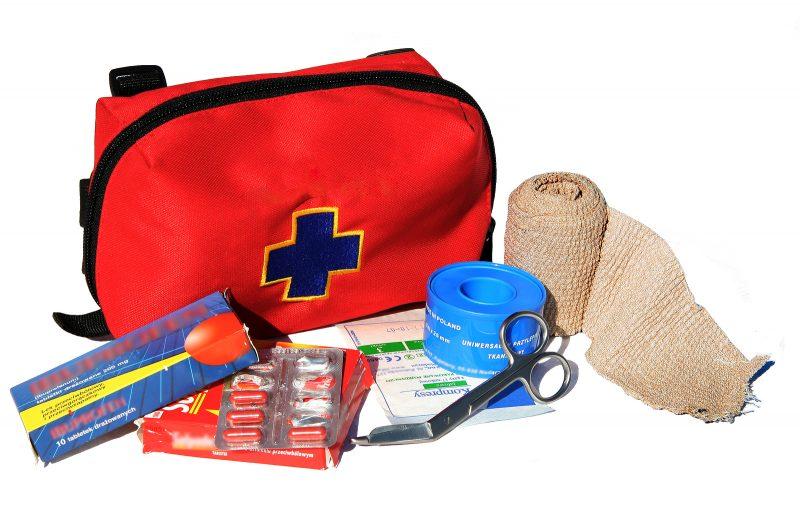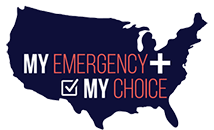Creating the Perfect Emergency First Aid Kit

You may think that your home is your castle and that your family is safe within its walls but do you have an emergency first aid kit?. Every year more accidents occur inside the home, however, than anywhere else.
More than 100,000 people die as a result of accidents around the home, and hundreds of thousands more are hospitalized. Children and the elderly are the most likely victims of accidents around the home, which may include falls, cuts, poisoning, and electrical shocks.
In other words, your home is full of accidental hazards, and you need to be prepared for anything. Here’s what your emergency First Aid Kit should contain.
Start with Prescriptions
If any of your family members have chronic illnesses, severe allergies or any other conditions that require prescription medications, then your first aid kit should contain those medications.
If someone in your family needs medication for asthma or allergic reactions in a hurry, you need to have it on hand and easy to access. Check these medications frequently to ensure that they have not expired, and replace them if they are.
The Bare Minimum Emergency First Aid Kit
In most cases, the emergency first aid kits you can buy in stores or online contain certain critical items in minimum quantities.
These are the next items you need to add to your kit, whether you purchase a ready made one or make your own:
- Adhesive bandages (Band-Aids). Choose a package that has a variety of sizes and shapes.
- A pack of absorbent compress dressings, at least 5 x 9 inches.
- A roll of adhesive surgical (cloth) tape.
- One 3-inch-wide roller bandage and one 4-inch-wide bandage.
- Two triangular bandages.
- Sterile gauze pages, 3 x 3 inches and 4 x 4 inches. At least five of each.
- Sealed anti septic wipe package. (At least five.)
- Sealed anti biotic ointment packages. (At least five.)
- Two packages of hydrocortisone ointment.
- 2 packets of 81mg aspirin. NEVER give children aspirin, however, as it can lead to Reyes Syndrome. Aspirin in first aid kits is for use when you suspect a patient is having a heart attack or stroke.
- A one way breathing barrier for mouth to mouth.
- Instant cold compress and space blanket.
- Oral thermometer. (Choose a non mercury / non glass variety.)
- Tweezers, and a flashlight.
- A first aid booklet.
Most first aid kits purchased online or from health and safety stores will contain these items in various proportions, but it’s always a good idea to check. Also remember that this is just a minimum, and if you have a large family, you may want to add more of the frequently used consumable items in your kit.
Common Medications to Add to Your First Aid Kit
If you are going to be travelling, or you just want to be prepared for any eventuality at home, then there are several types of commonly used medications you should add to your kit:
- A general purpose pain and fever treatment, such as ibuprofen. Remember that if you have children, you may need to have adult and pediatric versions of these types of medications.
- A medication for cough, nasal congestion and sore throat, again, for the various ages that make up your family.
- Calamine lotion or a soothing lotion for skin irritation, stings and scratches.
- Allergy medication (over the counter hay fever products for adults and children if applicable.)
Avoid products that any members of your family are hyper sensitive to or cannot take, and when in doubt, ask a doctor or pharmacist for a recommendation.
Other Useful Items for Your Emergency First Aid Kit
When you are constructing your home emergency first aid kits, there are several items that can be added to improve how the kit is used, and increase the level of usefulness:
- Choose a large, roomy bag in a bright color with lots of pockets if you are building your own kit. Make sure everyone knows it’s your first aid kit, and where it’s kept.
- Print out details of medical histories for your family. This can be helpful if you’re not around to administer first aid when it’s needed, or if you are traveling.
- Print out local emergency services numbers, and keep them in or near your first aid kit. If you travel, print the information for the area you are visiting. Don’t rely on numbers stored in cell phones. Batteries die.
- If you have pets in your household, you may want to consider making a similar kit for them, using pet medications. After all, they’re family too! Make sure the kits are clearly marked as being for human patients or pets, though.
While you are thinking about first aid, it’s worth checking your home for obvious hazards and fixing them, as well as taking basic first aid and CPR courses. First aid in the home can make a big difference when accidents happen. Be prepared for anything.




